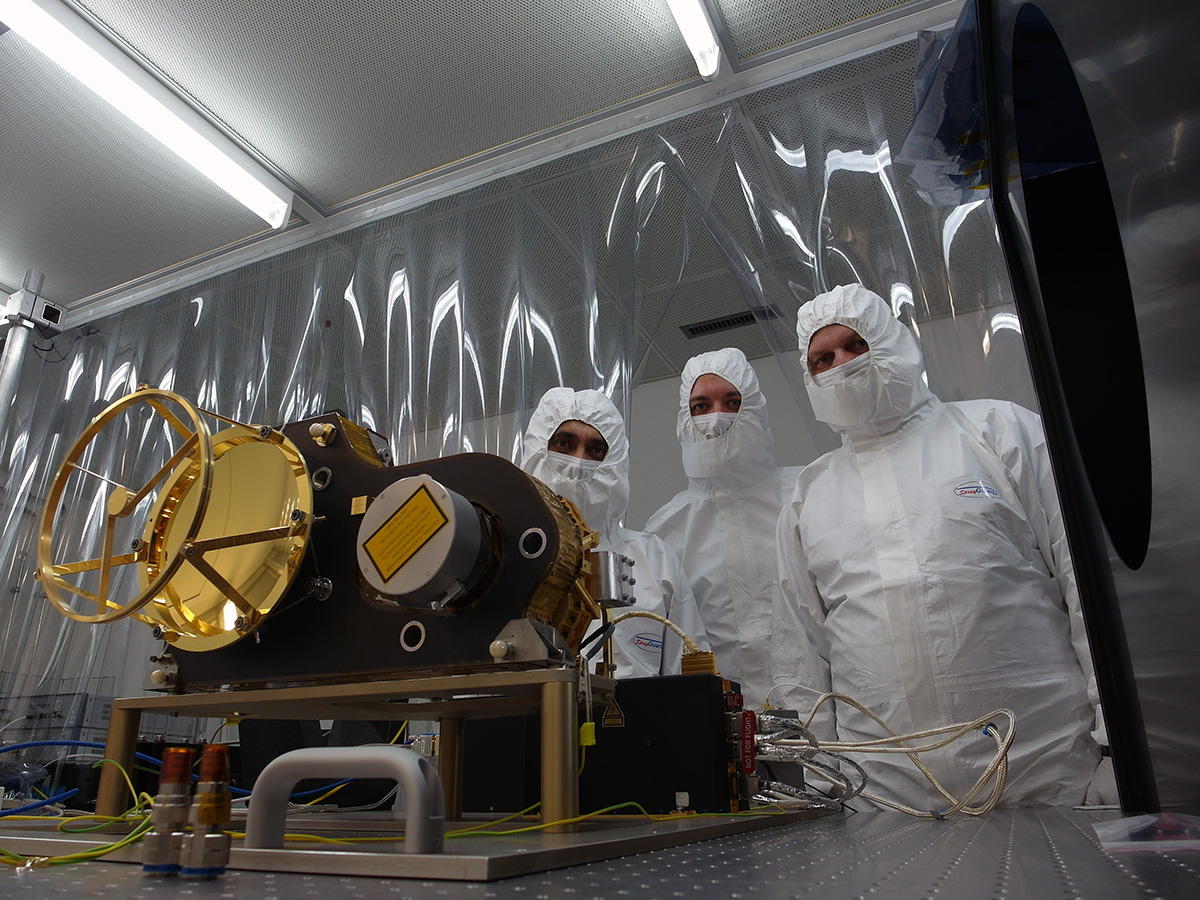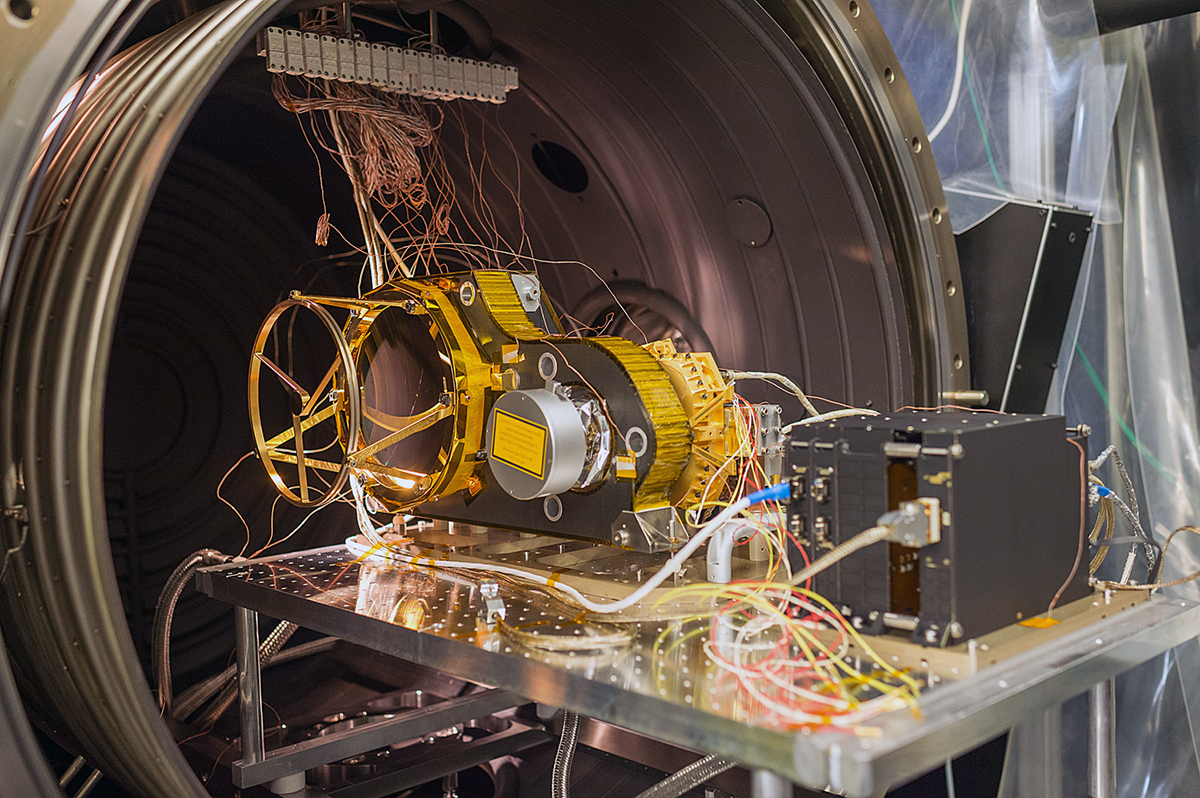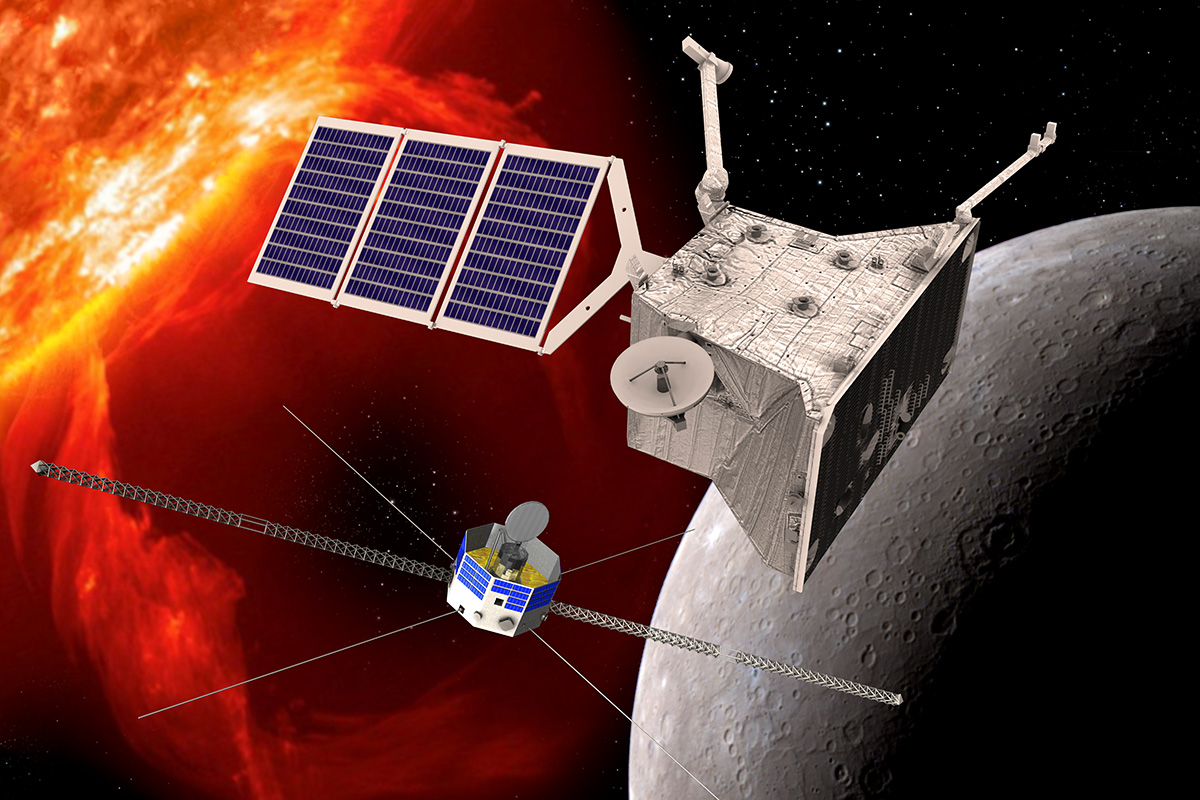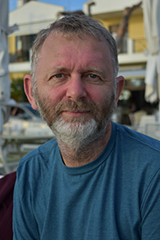"Mercury awaits us at 400 degrees Celsius"
The BepiColombo spacecraft is scheduled to start its journey from the Kourou spaceport to Mercury on 20 October 2018. Nicolas Thomas, Director of the Institute of Physics at the University of Bern, and his team designed and built the most important and delicate instrument on board. In an interview with "uniaktuell" he talks about the challenges.
Nicolas Thomas, you are co-project manager of the laser altimeter BELA. What is this instrument investigating? And why is it so important for the mission?
A laser altimeter is an instrument that measures the distance from the spacecraft to the surface of a planet, in this case, Mercury. If you then know exactly where the spacecraft is, then the measurement gives you the topography of the surface. Essentially we are able to make a 3D picture of the whole planet with BELA. There are many applications for this data. We can use it to investigate the surface geology in combination with the camera and we can use it to study the internal structure of the planet in combination with the Doppler shift of the radio signal from the spacecraft. As an example, one of our goals is to challenge a theory one of our colleagues in Bern, Willy Benz, published in 1988 which attempted to explain why Mercury has such a high density. BELA is part of a geodesy experiment to probe Mercury’s interior.


What was the biggest challenge in the conception and design of BELA?
There were four major challenges. Firstly, a laser altimeter for planetary remote-sensing had never been built before. The technology did not exist in Europe and we had to develop a European solution. Secondly, the target mass of the instrument was only 12 kg. Instruments of this type were available for Earth-based application but they were more than ten times the mass. Thirdly, we had to find a way to cope with the heat. The Sun at Mercury can be ten times stronger than at Earth. We had to develop novel solution to protecting the instrument from this heat (using reflective baffles for example) and keep the instrument aligned despite 50 C changes in temperature inside the spacecraft. Finally, a problem arose late in the programme when we saw that the high power laser was producing noise in the system. We had underestimated the effect on the detection of the return pulse from the planet. Fortunately, we had a trick and so we could solve it in time.
Is the mission looking for life on Mercury?
No. We cannot possibly expect life on a planet where the temperature varies from 400 C in the day to -200 C at night and where there is almost no water.

The first data will be delivered in about seven years when you will be retired. How is that for you?
That’s pretty hard to accept. It was not meant to be this way but the delays in the programme have had this consequence. Fortunately, there are some young guys in the team eager to use the data to answer the questions we originally formulated.
Your predecessor at the University of Bern was Hans Balsiger. How did you get to Bern?
I was looking to move on from my previous institute. I often hear complaints from people about their positions in one university or another institute. But if you don’t like it, there is nothing to stop you moving on. So that’s what I was looking to do. When Hans’ position came up, I thought I would apply because I knew Bern very well from contact with Hans, Johannes Geiss, Kathrin Altwegg and Peter Wurz. They know the importance of flying experiments in order to constrain models. I only wish that some other labs could remember that!
About the person

Nicolas Thomas has been Professor at the Physics Institute of the University of Bern since 2003 and, together with Peter Wurz and Willy Benz, heads the Department of Space Research and Planetology (WP). He received his doctorate in 1986 from the University of York in Great Britain and subsequently worked at the Max Planck Institute for Aeronomy in Katlenburg-Lindau with stays at ESA's European Space Research and Technology Centre in Noordwijk and the University of Arizona in the USA. He is working on remote sensing instruments for the study of Mars, comets, and the Jupiter system. He is currently helping to plan a mission to Jupiter's volcanic moon Io.
Contact
Prof. Dr. Nicolas Thomas
Physics Institute, Space Research & Planetary Sciences (WP)
Gesellschaftsstrasse 6
3012 Bern
Telephone direct: +41 31 631 44 06
E-mail: nicolas.thomas@space.unibe.ch
The BepiColombo mission
The BepiColombo mission comprises two spacecraft, the Mercury Planetary Orbiter (MPO) designed and built by ESA and the Mercury Magnetospheric Orbiter (MMO) designed and built by JAXA.
The two spacecraft will fly to Mercury together in a coupled system until reaching Mercury orbit. The MMO will then be released into a 400 km x 19’200 km orbit to allow detailed study of the magnetospheric interaction between the planet and the solar wind. The MPO will then descend to a 400 km x 1’500 km orbit which is optimum for remote-sensing of the planet's surface.
More information on the mission can be found on the ESA website
On board BepiColombo are instruments designed and built at the Institute of Physics of the University of Bern: The laser altimeter BELA and the novel mass spectrometer STROFIO.
The Laser Altimeter BELA is one of the most important experiments on board the MPO. The objective is to measure the shape, topography, and morphology of Mercury's surface. BELA will provide the absolute height and position of the topography in a Mercury-centered coordinate system.
The mass spectrometer STROFIO is part of SERENA on board the MPO. The objective of SERENA is the complete characterization of particle populations, ions and neutral particles in the environment of Mercury under the influence of solar radiation and solar wind.
Space research in Bern: at the forefront of world technology for 50 years
Bern's space research in figures shows an impressive portfolio: 25 times instruments with rockets have flown into the upper atmosphere and ionosphere (1967-1993), 9 times on balloon flights into the stratosphere (1991-2008), 33 instruments have flown on space probes, and a satellite was built (CHEOPS, launch 1st half 2019).
The successful work of the Department of Space Research and Planetology (WP) of the Physics Institute of the University of Bern was strengthened by the establishment of a university centre of excellence, the Center for Space and Habitability (CSH). The Swiss National Science Foundation also awarded the University of Bern the National Centre of Competence in Research (NCCR) PlanetS, which it manages jointly with the University of Geneva.
Further information
ABOUT THE AUTHOR
Brigit Bucher is Head of Media Relations in the Communication and Marketing Office at the University of Bern.